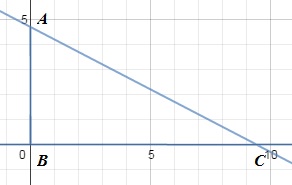You have $47 to spend at the music store. Each cassette tape costs $5 and each D costs $10. If #x# represents the number of tapes and # y # the number of CDs, what is the linear inequality that represents this situation?
1 Answer
Please see below.
Explanation:
As each cassette tape costs
i.e. one will have to pay
But one cannot spend more than
Hence we should have
the linear inequality that represents this situation.
The solution will be given by
graph{5x+10y<=47 [-6.75, 13.25, -2.96, 7.04]}
and one can purchase
But note that
Hence, possible solutions are only integral values in

